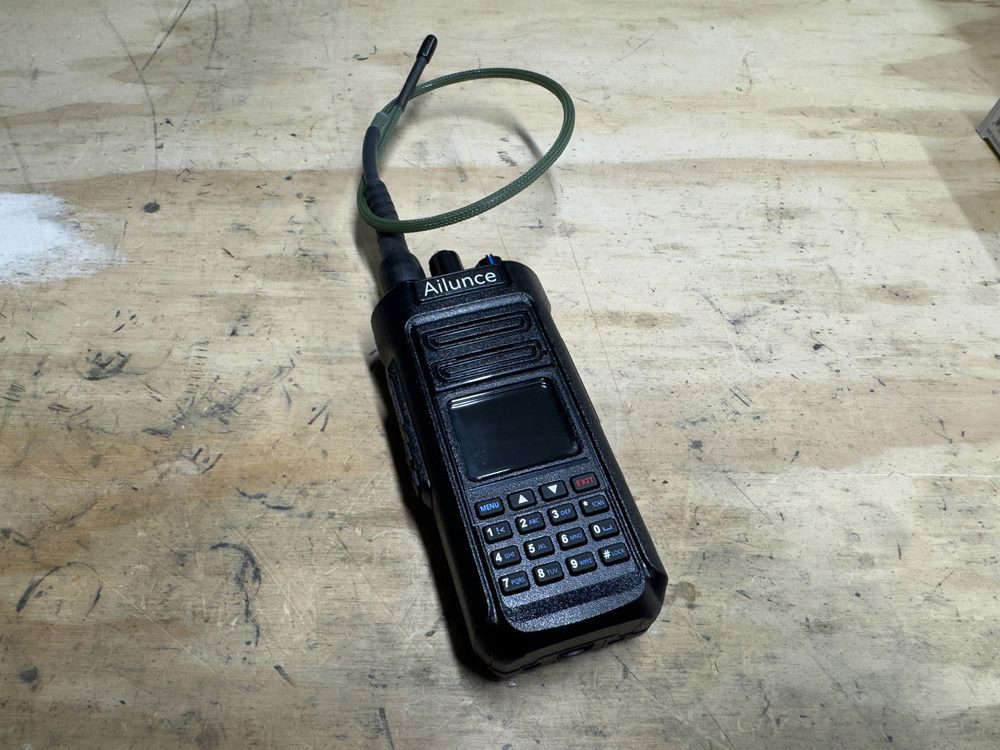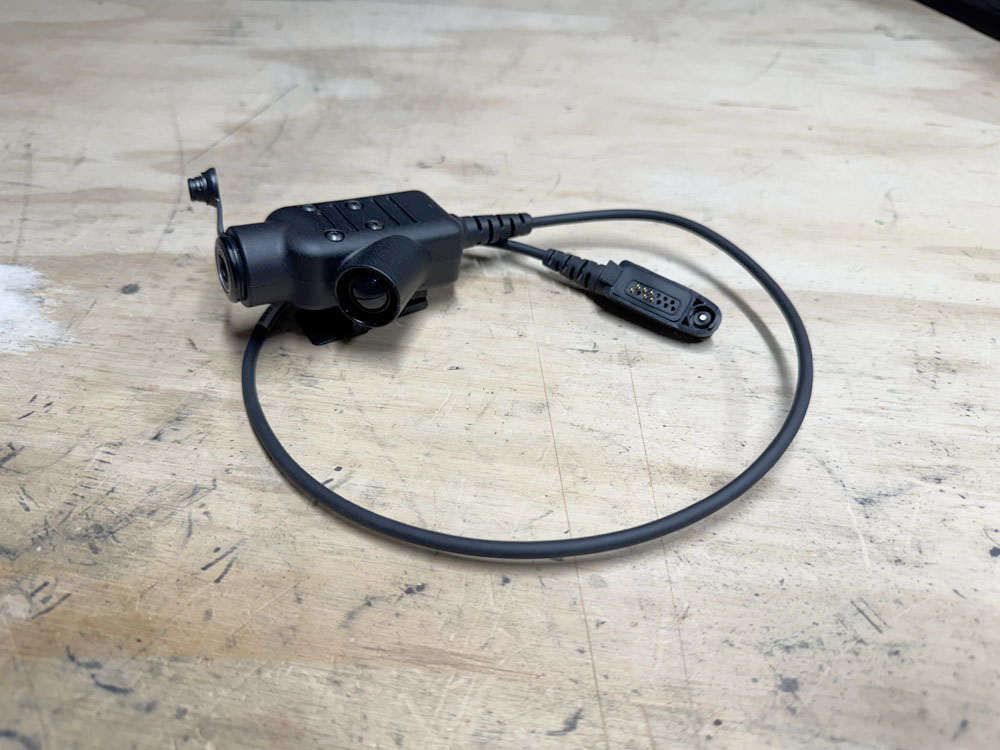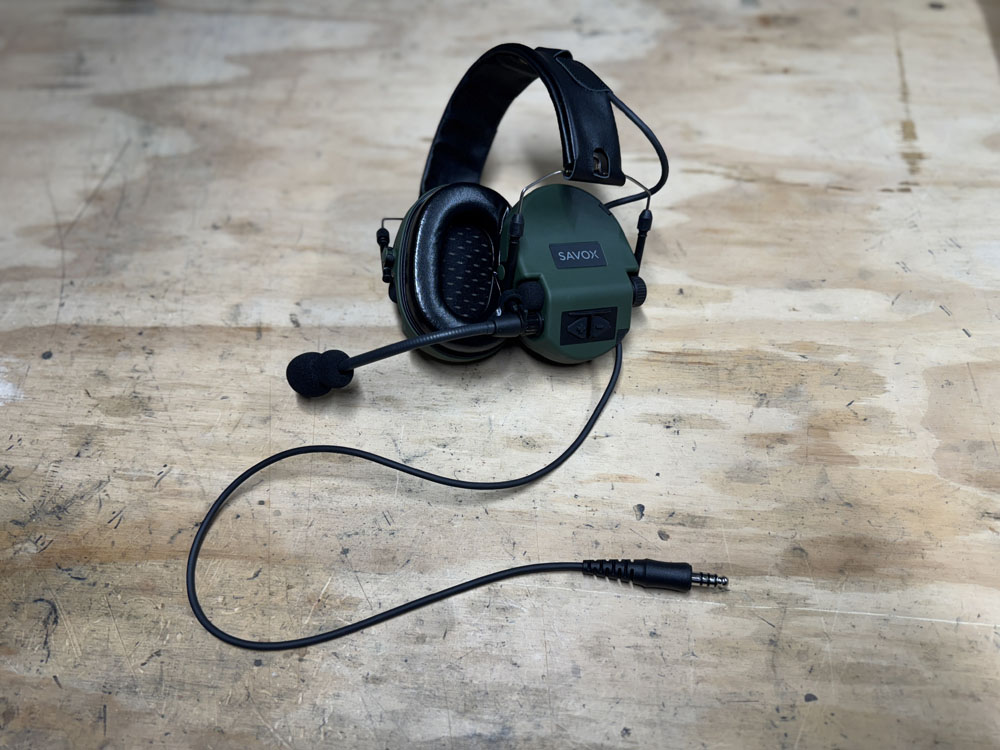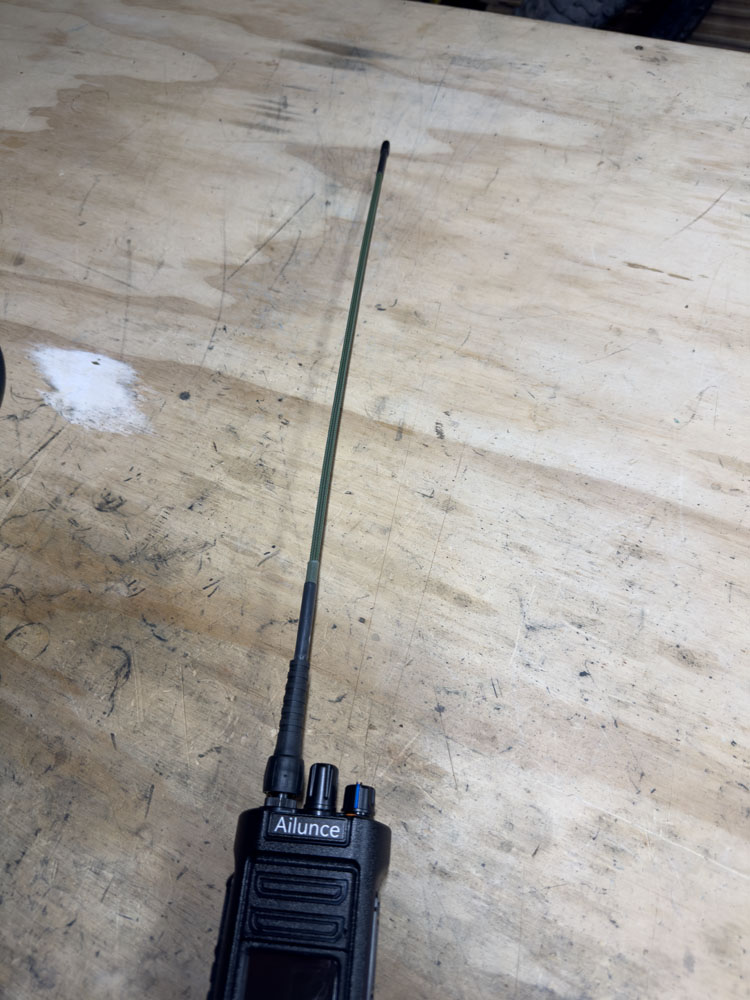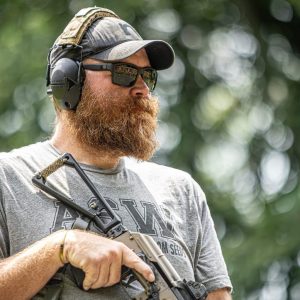Ready for the fight
Many years ago, I was introduced to the idea of a “Fighting Pistol” by the late James Yeager of Tactical Response. While the flagship class of that school shares the same name, the concept of using the word “Fighting” to classify further and define the capabilities of the tool being used stuck with me. It helped me understand that there must be a minimum set of standards for the tools we trust with our lives. Everything falling outside of that standard, even if it is functional, should not be considered for martial use due to a lack of reliability. If a tool is carried for a martial purpose, it must work without fail. It must be ready for the fight.
Yeager essentially outlined the key attributes that made the Glock 19 a pistol you could inherently trust. Over time, however, the options meeting that criteria expanded as more manufacturers began creating dependable and capable firearms. Fundamentally, he defined the mid-sized, striker-fired pistol in 9mm Luger, with a magazine capacity of at least ten rounds and no extra levers or safeties as the standard for a Fighting Pistol.
It was his methodology, that mindset, that guided me in how I think about the tools I trust with my life. As I’ve focused on disciplines complementary to firearms training over the last few years, such as using two-way radios, I’ve always looked at the gear through a lens of “Does this classify as a ‘Fighting’ tool?”
This perspective has significantly aided me in finding what I have come to call the “Fighting Radio” setup. It has changed over time, and it will continue to do so as I learn and the industry produces new or better solutions. However, the universal constant will be the critical thinking involved in ensuring it’s the right tool for the job.
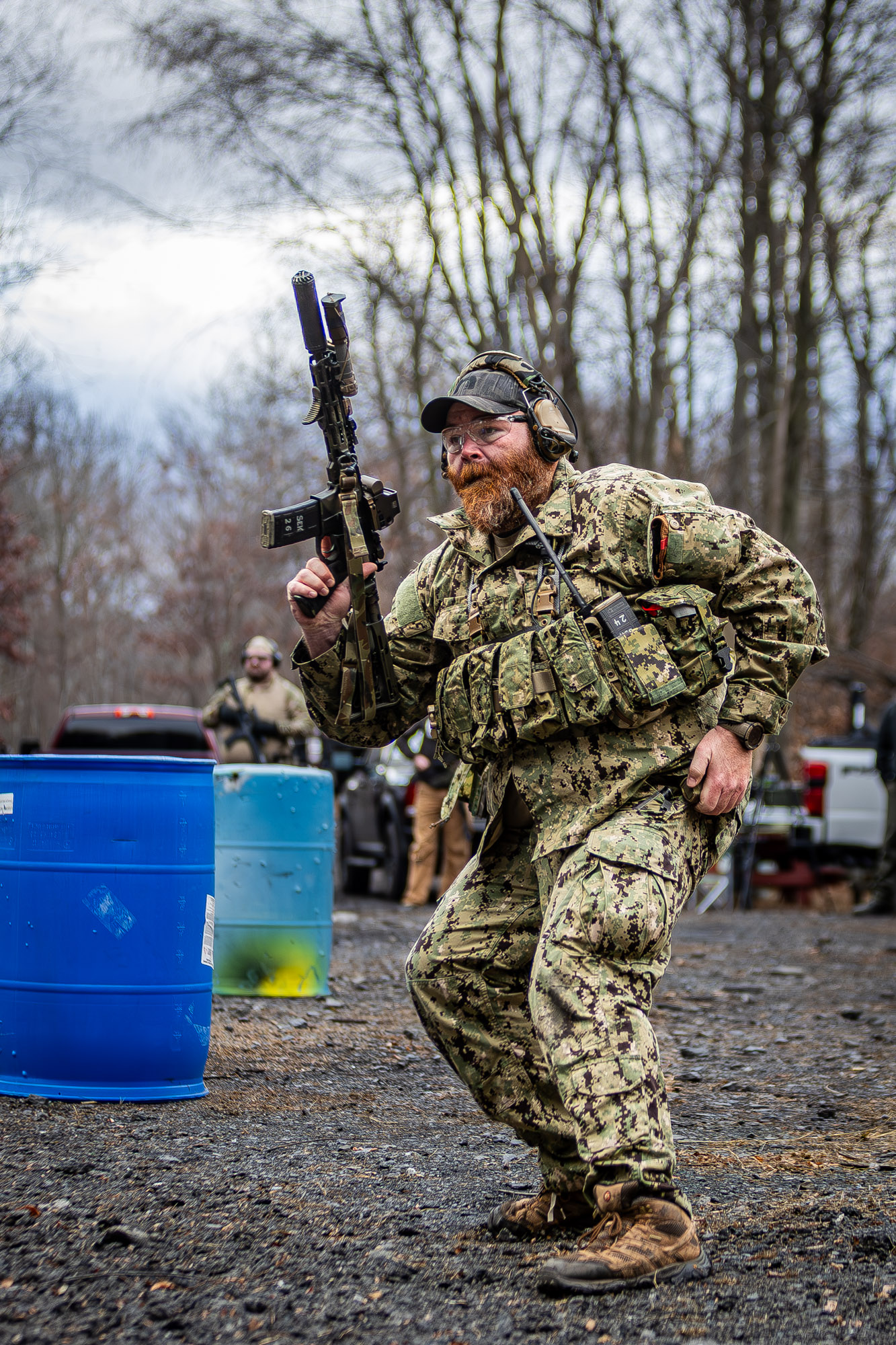
Purpose
First and foremost, we must establish the goal of what a Fighting radio should achieve. In my opinion, it must do two things:
- Allow you to communicate with your intended contact(s)
- Withstand the worst conditions you are likely to encounter
It seems like an overly simple list. However, you would be surprised at how many radios or electronic devices are immediately disqualified when you take a genuine and honest look at your use case.
Making contacts
Communicating with your intended contact is the most fundamental aspect of any radio, and if you can’t do that, it defeats the purpose of using one entirely. As an example, if the people you want to talk to only have “bubble pack” FRS radios (like a Motorola Talkabout), and you have a radio that is only capable of communicating on frequencies that do not fall within those set FRS channels, then to quote Metallica “Nothing Else Matters”. It doesn’t matter how awesome YOUR radio is… it needs to work with everyone else’s.
Conditions
We must also examine how and where we intend to use this radio. Will it only ever be in a car? Under a roof at a kitchen table? Or strapped to your plate carrier? These are vastly different environments and require varying levels of weather hardening and connectivity with peripheral devices to ensure the highest level of reliability.
You’ll notice that the two requirements above are pretty flexible based on your needs, but they can change rather dramatically depending on who you want to talk to and how you intend to do it. For the remainder of this article, I will outline the use case that I believe applies to most individuals who may want to use a Fighting Radio.
- Connect with other handheld users within radio LOS (Line of Sight) on the 2m (VHF) and 70cm (UHF) radio bands
- Have the capability to utilize enhanced COMSEC (Communications Security) practices and technology, such as AES256 encryption
- Must be able to survive being used in the outdoors, exposed to the elements (rain, wind, cold, heat, etc.)
- Activities may require becoming partially or totally submerged in water for short periods
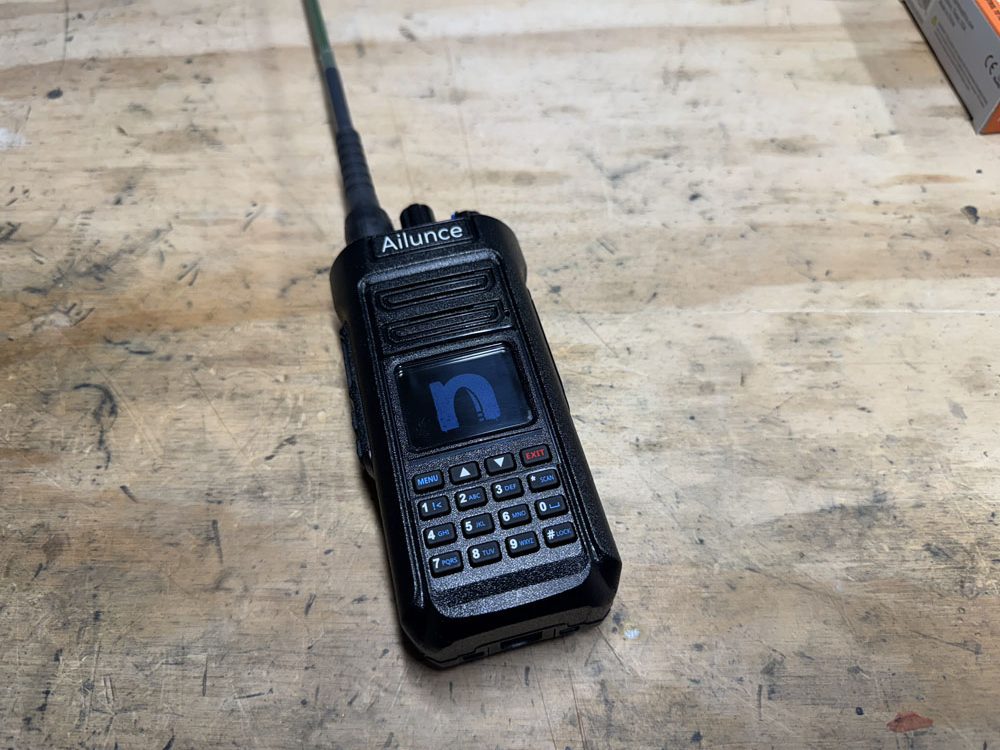
Requirements
After many hours of testing, firsthand usage of radios in outdoor training scenarios, and secondhand accounts from trusted sources within the training industry, I have compiled the following requirements that a Fighting Radio must fulfill.
Dual Band (2m/70cm)
The most common two-way radio in the world today is undoubtedly the Baofeng UV5R and all of its subsequent models. Spoiler Alert: That radio does not meet the definition of a Fighting Radio by a long shot, but it would be a huge mistake not to consider all the people using them as potential contacts. For this reason alone, a Fighting Radio must be able to communicate with them.
Why use both the 2m (VHF) and 70cm (UHF) bands? Without going into the nerdy details, each band performs better or worse in different environments (outdoors vs. urban) and provides radio operators a level of flexibility that isn’t available with a single-band radio. Additionally, the FRS and MURS frequencies are frequently used interchangeably among various schools and training organizations, making it much more practical to have a single radio that can operate on both, rather than trying to persuade entire organized groups to change their practices just because your radio can’t access their frequencies.
Submergible in water
When people hear that submergibility is a requirement, they often scoff and think it’s about fantasizing some Navy SEAL incursion. The reality is that standing water on the ground can easily create puddles that are measured in feet rather than inches, and I don’t think I have much of a say in where I have to lie prone to avoid gunfire. Not to mention that streams, rivers, lakes, and oceans exist… and while I don’t intend to swim in them with my plate carrier on, getting in and out of a vessel (especially smaller boats or rafts) often leads to some form of immersion, even if only momentarily and intentionally.
It’s for this reason that a Fighting Radio must be not only “waterproof” but also submersible. This ensures that the radio functions if you take a short plunge, and it is much more likely to withstand wind-driven rain.
Waterproof Accessory Port
The ubiquitous Baofeng UV5r features an accessory connector known as a Kenwood 2-Pin. It consists of two open holes on the side of the radio that can allow water to flow directly into the sensitive electrical contacts. While most radios that use this type of connector have some form of rubber protective cover, this protection becomes ineffective when the port is in use. There is no way to secure the plug into a Kenwood 2-pin port to ensure it remains tight and prevents water from entering.
Instead, a Fighting Radio must include a port or connector designed to prevent water ingress. Options such as the “Yeasu Waterproof Connector” or various Motorola surface pin-style connectors (like the M3 connector) are far superior to open holes that offer no water protection.
Connection with a Disco32 PTT
For the uninitiated, a PTT (Push-to-Talk) device connects to a radio’s connection port. It extends the PTT button away from the radio, allowing the user to place it in a more convenient location on their body while still allowing a microphone or headphone peripheral (such as Peltor ComTacs or Savox Noise-COMs) to be connected. Usually this is with a TP120 (aka NEXUS) plug.
There is only one reliable company producing unquestionably dependable PTTs for civilians, and that is Disco32. I’ve been a massive fan of their work for years, and I will only consider radios for which they manufacture a PTT.
Analog, DMR, and AES256 Encryption Capable
Most usage of a Fighting Radio is likely to be in an FM analog mode on training frequencies. This means that the radio must be able to transmit on any frequency, including the FRS (Family Radio Service), GMRS (General Mobile Radio Service), and MURS (Multi-Use Radio Service) channels. This often means that a radio will need to be unlocked or “MARS Modded” to allow it to transmit on these reserved frequencies that the FCC does not want you using with your non-licensed radio.
Beyond that, the ability to employ a higher level of COMSEC through the use of digital modes and even further through encryption is invaluable. Scanners and SDRs (Software-Defined Radios) make it so easy to detect any radio traffic that it’s imperative to have some ability to obfuscate your radio traffic through extensive planning or encrypt it through technological solutions. Preferably, we would use both. This particular requirement is not mandatory, but it is important enough to be included on this list.
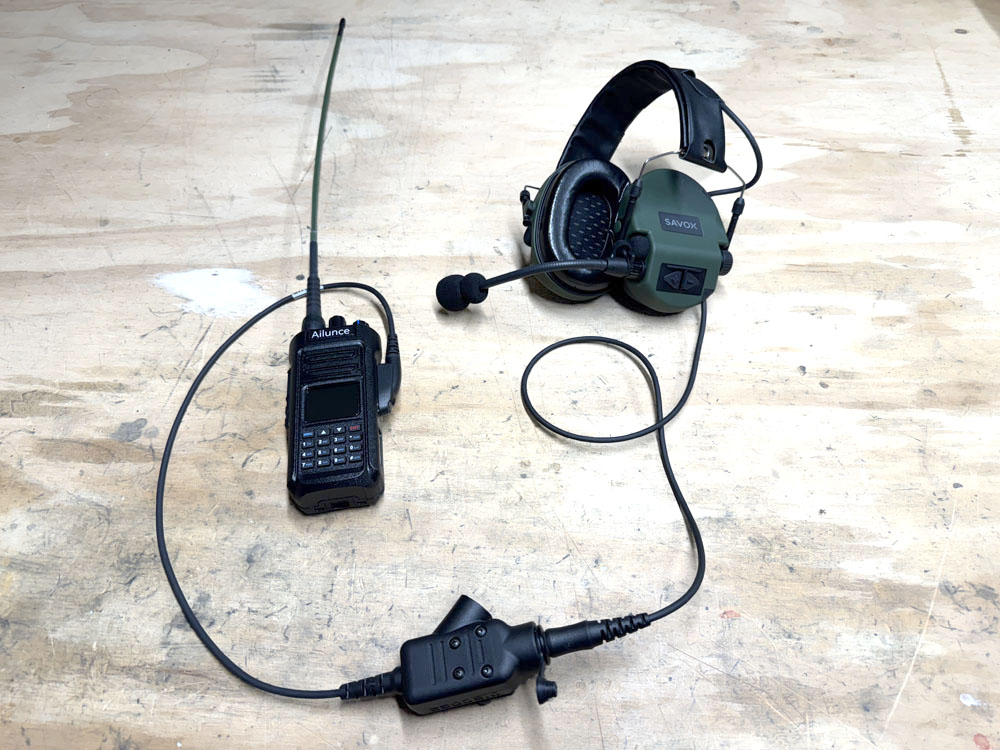
The Fighting Radio Setup
There are three main components to the Fighting Radio Setup: the Radio, PTT, and the headset. You may find different solutions, but these three things are the starting point for a successful integration of a radio into your fighting kit. I have not seen a more foolproof setup that eliminates the frustrations of incompatible gear and the dreaded “hot mic” nightmare that exists when people start trying to find ways to utilize sub-standard gear to integrate radios into their kit.
In the spirit of aligning this process with that of defining the Fighting Pistol, I am offering my attempt at providing the “G19” of radio setups.
Available for purchase as a bundle in the Bulletn Shop
NOTE: The following is current as of May 2025. See the end of this article for a change log of any updates.
The Radio – Retevis Ailunce HD2
Most people are surprised to see a Chinese radio as the overall recommendation. Generally considered to be “cheap” and difficult to program, the HD2 does have some drawbacks. However, it is the ONLY radio that meets all the requirements while being reasonably affordable. (Seriously… I’ve looked… extensively. If you find another solution, please let me know.)
Is there a Wizbang 5000 XTR made by Motorola? Maybe, but Motorola gives exactly zero shits about civilians, and their solutions usually require adding at least one more “0” to the price of any other solution available to the general public.
I have been using the HD2 for over two years. It has endured multiple outdoor multi-day classes, carried in my chest rig and used as a handheld device, performing as well as any other handheld radio. Although programming can be challenging, witnessing its effectiveness in various environments and scenarios with dozens of students has confirmed it as the only viable solution to meet my requirements.
The tricky part about using more complicated and capable radios is that the level of expertise required to make them all communicate with one another also increases. This is why I would recommend buying a “programmed” radio that is all set up and ready to use, or having a solid “Commo” person in your group who can help get radios sorted out among your team. Ailunce HD2 radios are available through Bulletn with or without encryption.
Cost: $250 Unencrypted, $400 Encrypted
PTT – Disco32 Constant Able PTT (M3)
Nobody out there is making better or more reliable PTTs for civilians than Disco32. Full stop. Furthermore, they are innovating with new solutions that were previously unheard of.
There has always been a compatibility challenge in this field due to the existence of two different types of microphones that can be used in electronics. “Electret” microphones and “dynamic” microphones. Again, trying to avoid diving down the nerd hole, these two types of microphones offer different benefits and drawbacks in different environments. Ultimately, the key takeaway is that dynamic (low-impedance) microphones are typically found in military-style headsets (e.g., Peltor, Ops-Core). In contrast, electret (high-impedance) microphones are generally used in consumer electronics.
Previously, a PTT could only accommodate one of these types of mics. You had to choose between an amped or non-amped PTT and then hope you made the right choice for your headset, buying the other version if you preferred a different headset mic that you liked to use. Not anymore. The Constant Able is a PTT that was recently released by Disco 32, allowing for seamless swapping between peripherals that use either microphone technology.
Cost: $300
Headset – Savox Noise-COM 200
Savox is a well-established European manufacturer of communication products for military and public service applications. As of early 2025, Bulletn has officially become a dealer of Savox products due to their outstanding offerings, which are being introduced to the market at a highly disruptive price compared to those of other manufacturers.
Typically, the answer to the question “What comms headset should I get?” has always been “Just buy a used set of Peltor ComTacs.” However, saving money on buying a used set often comes with the headache of sending it out for warranty repairs or, worse yet, being denied because you’re not the original owner. I’ve had more than a few friends burned by buying inoperable Peltor or OpsCore units.
However, what if there were a manufacturer out there selling the same capability, brand new, with a warranty? And at a price point equal to what people are typically paying for “Used”? That’s why Savox is so exciting.
In my testing, the Savox Noise-COM 200 provided performance and comfort that I believe is not only comparable to but superior to the technology found in Peltor ComTac V headsets. Additionally, Savox consistently offers various versions, including headband, neckband, and ARC rail adapters. Personally, I’m a big fan of the neckband version, which is often hard to find from other manufacturers, but that’s just my personal preference.
Cost: $585
Antenna – Foul Weather Whip Antenna + TNC adapter (Optional)
Most radios come with stock “rubber duck” antennas, which are often inadequate for their intended purpose. A high-quality antenna not only enhances performance but also allows for better and more ergonomic integration into your overall gear setup. The Foul Weather Whip antenna is a prime example of an antenna that achieves both of these objectives. Its flexibility provides an excellent solution for stowing it along the shoulder straps of a plate carrier or chest rig.
It’s essential to note that there are numerous options available for mounting antennas on radios. I find the TNC connector to be the sturdiest option available for antenna mounting and try to standardize on it for all my radios. Bulletn offers the Foul Weather Whip antenna with the TNC adapter.
Cost: $75
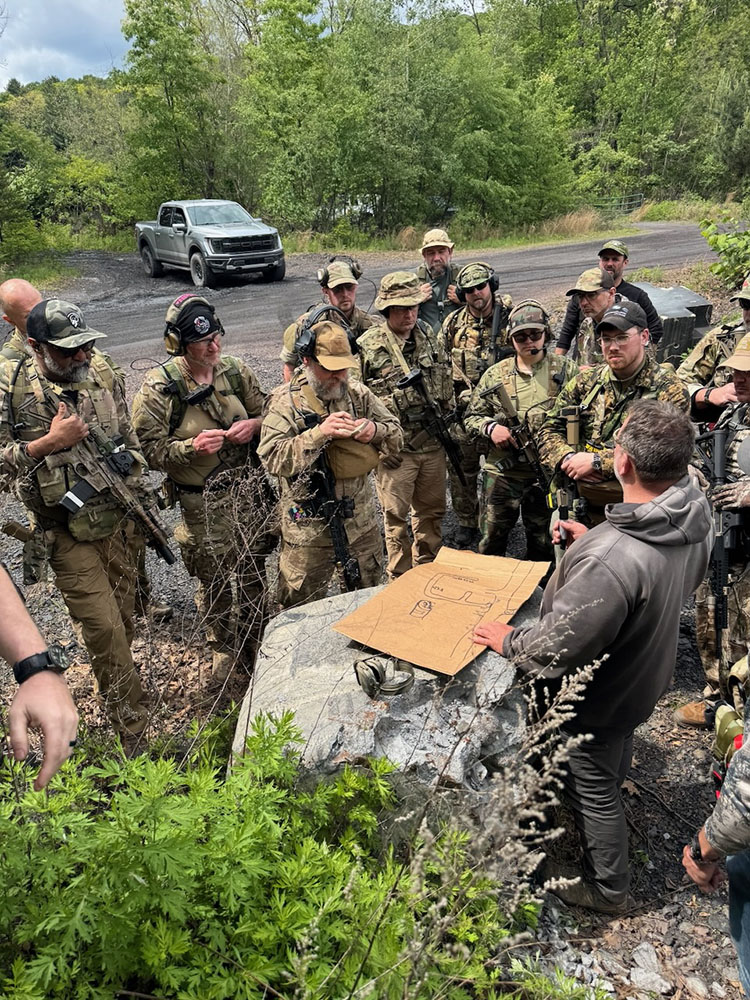
Prioritizing What Matters
It’s important to note that at the time this article was written, the total cost of all the base components of the Recommended Fighting Radio Setup (Radio + PTT + Headset) was approximately $1,100. This is a significant investment, especially when compared to spending just $25 on a Baofeng UV-5R. However, I want to pose a question: If you get up and walk over to your gun safe, how many of the rifles, optics, or pistols inside can you use at any given moment? How many of them serve the same exact purpose as others? How many could you sell to raise $1,100? My guess is that you wouldn’t have to sacrifice much from your gun collection to afford a reliable radio setup. In other words, if you have three AR-15s and are still using a Baofeng, it may be time to reconsider some priorities.
In the firearms and training communities, we understand that when it comes to gear, you truly get what you pay for. Deep down, we recognize that the real objection isn’t usually, “I can’t afford that.” For most of us, the true excuse is, “I don’t value that.”
Get Out There
I encourage you to take your gear out and truly put it to use. Don’t just clip it on at the local gun club, take a few shots, and consider that a successful test. Engage in real scenarios—shooting, moving, and communicating at the same time. Practice getting in and out of vehicles, working as a team, and patrolling through the woods. Try doing all of this while carrying a 70-pound rucksack in the rain.
We should hold our communication equipment to the same standard and level of scrutiny that we apply to our firearms. Ultimately, if your radio setup meets your needs, that’s fantastic. However, you should be out there assessing your gear to see if it truly qualifies as YOUR Fighting Radio. If you don’t know how to use it well enough to make that assessment, seek out classes and trainers to help you improve.
As with any aspect of the “Fighting” world, none of this is meaningful or effective without proper training.
Get Smart, Stay Ready, and Find Training.
-Mike Fiore
Change Log
2025-05-29: Article composed

